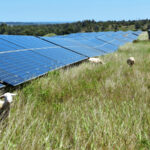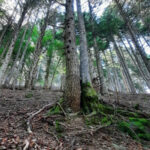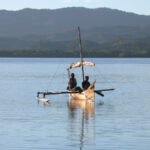[FRB-CESAB] Newsletter 12 CESAB – January 2025
The FRB’s Center for Biodiversity Synthesis and Analysis (CESAB) is a research structure with an international scope whose objective is to implement innovative work on the synthesis and analysis of existing data sets in the field of biodiversity. Twice a year, the CESAB publishes a newsletter listing the different news and activities going on.
A few words from Claire Salomon, deputy director of the FRB-CESAB
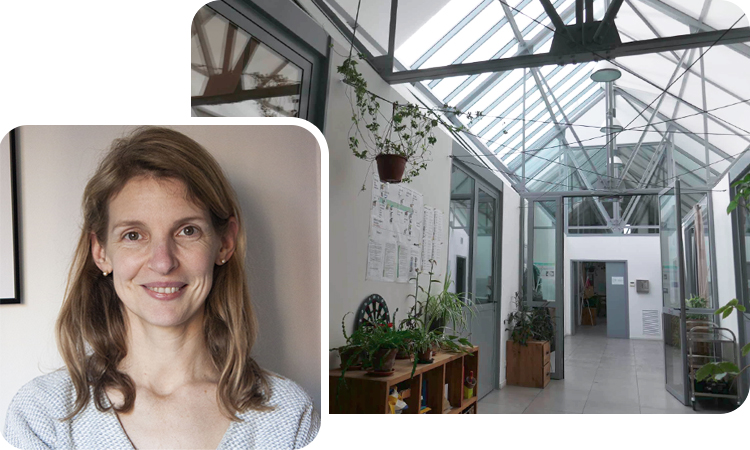
Welcome 2025!
This year marks, even more than previous ones, the transition into a new era: that of ecological and social transformation towards the “transformative change” called for by IPBES. It is high time that we, as researchers and societal actors, rise to the challenges ahead and adopt a systemic vision. More than ever, we must break out of silos, innovate in governance and solutions, and evolve our shared values and perspectives.
So let’s say it: Biodiversity, climate, food, water, health… same fight!
In this context, rigorous and independent knowledge and data synthesis becomes more essential than ever. Synthesis centers such as CESAB, the synthesis center of FRB, are key tools in achieving this goal in the most relevant way. FRB and its founding members are fully committed to this mission and continue to offer the international scientific community regular calls for projects, combining funding for traditional synthesis projects (three-year research projects bringing together an international and transdisciplinary research team) and DATASHARE projects (two-year projects aimed at compiling and facilitating data sharing). This year, in 2025, we are renewing the DATASHARE call, alongside an exciting new addition: IDEASHARE, a two-year project designed to compile and facilitate the sharing of ideas and concepts. Stakeholders are also increasingly involved in data synthesis and research project funding, further proof—if any were needed—of the growing maturity of this field and the importance of making biodiversity databases widely accessible.
2025 also marks another transition for CESAB, with changes in its scientific leadership and scientific committee. We have a year ahead of us to organize and find the best balance of expertise to continue along the path we have set.
The FRB excels thanks to a team with diverse and complementary expertise, making its Cesab a key hub for data and knowledge synthesis on biodiversity.
Throughout 2024—and as expected for 2025—CESAB has remained as busy as ever, hosting one to two working groups per week at its Montpellier site! These groups have been particularly active, with a total of 37 scientific articles published over the past year.
2024 marked the end of the projects for the NAVIDIV and BRIDGE groups. Both will present their final results during upcoming CESABinars this spring (more details below). While some working groups are concluding, others are just beginning such as the three projects selected at the end of the year as part of the two calls launched in 2024.
Working group – Thematic call 2024
The ESEB project, “Impacts of European solar energy infrastructures on biodiversity: integrating existing knowledge to enable nature-positive management and investments“, coordinated by Alona ARMSTRONG (Lancaster University, UK) and Armin BISCHOFF (University of Avignon, France), was selected by the FRB-ITTECOP steering committee in September 2024. This project is part of the ITTECOP 2024 Thematic Call for Projects, organized in partnership with the French Ministry of Ecological Transition and ADEME, focusing on the “Impacts of human infrastructures (transport and renewable energy production) on biodiversity“.
Working groups – Generic call 2024
Funded by FRB with support from its founding members and the French Ministry of Research, the general synthesis call for projects has led to the selection of two new projects:
- DIV4DROUGHT – Effects of tree diversity on forest drought resilience: a mechanistic approach to reconcile divergent observations, coordinated by Joannès GUILLEMOT (CIRAD, France) and Charlotte GROSSIORD (EPFL, Switzerland).
- FISHMIP-OSP – Ocean System Pathways (OSPs): scenarios and a simulation framework to explore the future of global fisheries, coordinated by Olivier MAURY (IRD, France) and Derek TITTENSOR (Dalhousie University, Canada).
2025 Call – Canadian Researcher
The third CIEE-ICEE-FRB-CESAB joint call, funded by the French Embassy in Canada and offering Canadian researchers the opportunity to participate in a CESAB working group workshop is still open and will close on the 14th of February. The results will be announced in the next newsletter.
2025 Call – IDEASHARE & DATASHARE
In 2025, FRB with the support of the HEIRS (Human Evolution Research Synthesis, based in Faro, Portugal) will launch a call for projects to fund two complementary types of working groups: IDEASHARE and DATASHARE. This initiative aims to advance biodiversity research by supporting both the development of innovative interdisciplinary approaches and the compilation of high-quality, accessible databases.
- IDEASHARE focuses on generating new concepts, models, and methods through interdisciplinary collaboration. It brings together biodiversity experts and specialists from other fields to explore new perspectives and frameworks.
- DATASHARE is dedicated to accelerating the compilation, curation, harmonization, and open sharing of biodiversity-related databases, ensuring they are accessible and reusable for future synthesis and analysis.
The call is set to open in April. If you’re interested, be sure to check the calls for projects page regularly or subscribe to our mailing list!
Past events
2024 conferences
The final quarter of 2024 was marked by the closing conferences of two major programs. Congratulations to them!
- The FISHGLOB group, co-funded by the University of Montpellier, the Canadian CIEE, and the French Embassy in Canada, gathered at CESAB in December for a “Return”. Their conference, aimed at an international scientific audience and focused on fish biodiversity in a changing world, is now fully available on the FRB YouTube channel.
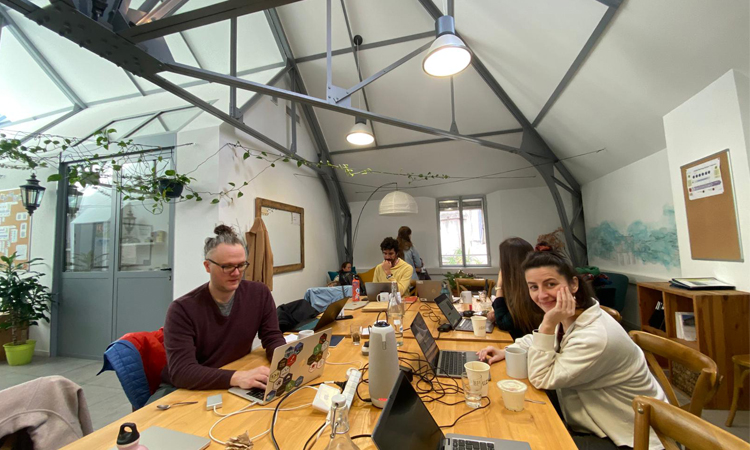
The FISHGLOB group during their visioconference on the 5th of December 2024
- Meanwhile, the SYNTREESYS group held a conference during its sixth and final workshop, which was relocated to Brazil for the occasion. This event provided an opportunity to engage with the local scientific community on understanding tropical forests. The conference gathered up to 100 in-person participants and 200 more online. To learn more about this group and their event, check out their newsletter, accessible through their group page.
Upcoming events
Webinars – CESABinars
Since June, six CESAB working groups have presented their CESABinars—a valuable opportunity for groups completing their projects to share their findings with the scientific community.
All sessions are recorded and available for replay on our YouTube channel. So, if you’re curious about the spatial and temporal variability of coral reefs (SCORE-REEF), planktonic foraminifera under climate stress (FORCIS), reproductive strategies and plant diversity (DIVERS), or the causes and consequences of functional rarity (FREE1), you haven’t missed out! These topics have been covered in recent presentations since the last newsletter.
We are also pleased to announce the upcoming CESABinars:
- NAVIDIV – Inland waterway infrastructures and biodiversity: impacts and opportunities for navigable landscape management – March 7, 2025
- BRIDGE – Co-constructing taxonomic and functional plant diversity across interacting road, river, and agricultural corridors – May 26, 2025
To (re)view past CESABinars and stay updated on upcoming ones
2025 Conferences
From June 3 to 6, 2025, the One Ocean Science Congress, a UNOC event organized by CNRS and IFREMER, will take place. On this occasion, Devi VEYTIA, former FRB-CESAB postdoctoral researcher in the Priority Research Program (PPR) “Ocean and Climate“, will present her findings to the scientific community gathered in Nice.
On June 26, 2025, the FRB Annual Conference will focus on the Nexus approach, as explored in the latest IPBES assessment. This concept, which you will likely hear more and more about, highlights the intricate links between biodiversity, water, food, health, climate change, and energy systems. Many FRB-CESAB groups are already integrating this interdisciplinary perspective into their work. This event will be an opportunity to explore these interconnections and highlight solutions to mitigate these intersecting crises! We will share more details about this event in the coming weeks on the FRB website.
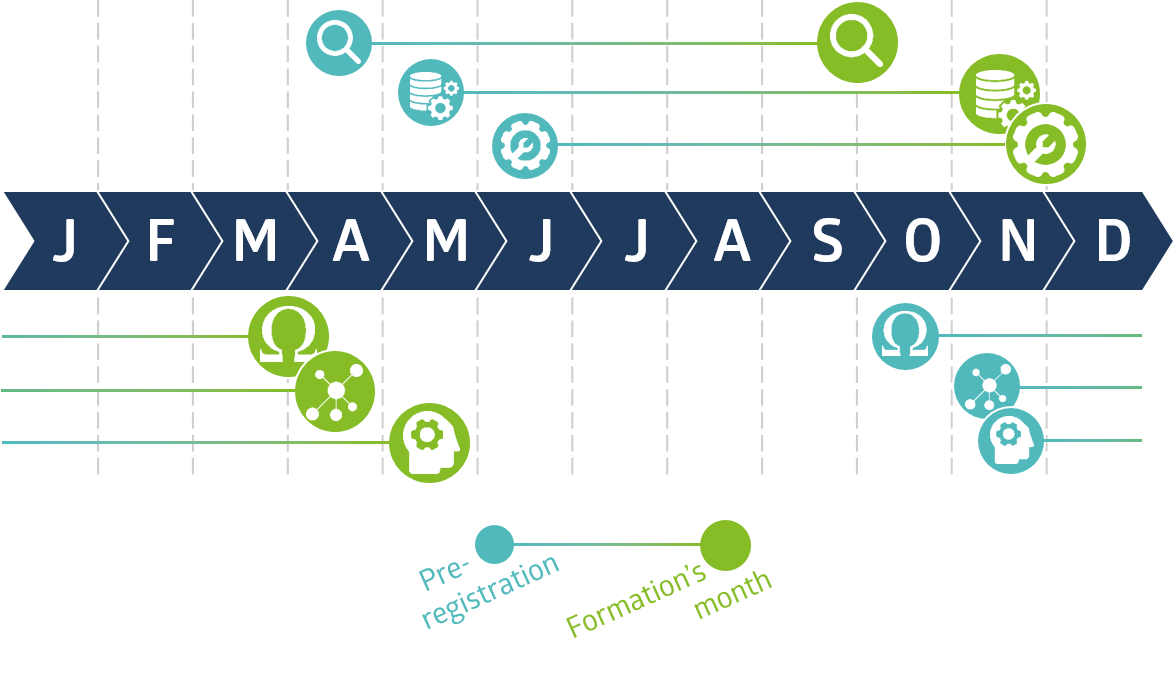
CESAB and its partners now offer six training programs! The major new addition for 2025 is a course on Artificial Intelligence for Ecologists. Pre-registration for this first edition is now closed. In fact, pre-registration for the spring training sessions is already full for this year, but stay tuned so you don’t miss the next wave of pre-registrations for the fall sessions!
March 2025: Theory-driven Analysis of Ecological Data [Pre-registration closed] / 4th edition
- In english
- Training in mathematical modeling techniques (differential equations, Lotka-Volterra, jacobian matrices, etc.) as well as the statistical interface between models and biodiversity data
- In partnership with the GDR TheoMoDive
April 2025: Analysing ecological network data [Pre-registration closed] / 2nd edition
- In english
- Training in the analysis of ecological network data, through a general introduction to networks, classic metrics (including modularity, nestedness, and clustering), null models, generative models (SBM), multi-layer networks, as well as an overview of newer techniques (such as embedding), combining traditional lectures and practical case studies.
- In partnership with the ANR ECONET
May 2025: AI for ecologists: a toolkit [Pre-registration closed] / 1st edition
- In english
- Training in the concepts and tools of artificial intelligence through a mix of theory and practical work, based on various types of data commonly encountered in ecology. The goal of the training is to provide participants with the necessary autonomy to assess which algorithms are best suited to their research problems, where to find them, and how to adjust them based on the question being asked.
October 2025: Biodiversity knowledge synthesis: an introduction to meta-analyses and systematic reviews [Pre-registration opens in April] / 4th edition
- In french
- Introduction to meta-analyses and systematic review/mapping methods applied to the field of biodiversity
- In partnership with PatriNat
November 2025: Biodiversity data: From data collection to publication [Pre-registration opens in May] / 2nd edition
- In french
- Data cycle in biodiversity: from acquisition to open access, including standardization, archiving, and the publication of a data paper and data management plan
- In partnership with the Pôle National de Données de Biodiversité (PNDB) and GBIF France
December 2025: Best practice for Reproductible Research in Computational Ecology [Pre-registration opens in June] / 7th edition
- In french
- Training researchers in reproducibility tools, software development, and version control (R, git, quarto, renv, docker, etc.) applied to biodiversity research
- In partnership with the GDR Ecostat, the UMR ENTROPIE, the ISEM, the LBBE and the MBB
Find out more about all our training courses
At the end of 2024, we said goodbye to:
- Aurore Receveur, postdoctoral researcher from the MAESTRO group,
- Pavanee Angelee Annasawmy, data scientist from the BLUEJUSTICE group,
- et Brunno Oliveira, postdoctoral researcher from the BIOSHIFTS group.
We wish them all the best for the future and hope to cross paths with them again at CESAB soon!
We also welcomed three new team members at CESAB:
- Déborah Birre, postdoctoral researcher in the MOTIVER group,
- Lisa Nicvert, postdoctoral researcher in the DRAGON group,
- Romain Frelat, who joins the Data Science team alongside Nicolas CASAJUS and Camille COUX. Romain will specifically oversee groups selected within the “Anthropogenic Pressures and Impacts on Terrestrial Biodiversity” program, a partnership with MTECT and OFB, including 10 CESAB synthesis projects and 14 additional projects from the Synergy and Systematic Reviews divisions.
Finally, the CESAB team is thrilled to celebrate the achievements of four former postdoctoral researchers who have recently secured permanent positions:
- Kévin Hoeffner (LANDWORM) – Researcher Scientist at INRAe in Rennes,
- Aurore Receveur (MAESTRO) – Researcher Scientist at IRD UMR MARBEC in Montpellier,
- Lucie Mahaut (FREE 2) – Researcher Scientist at INRAe in Montpellier,
- Et Aaron Sexton (NAVIDIV) – Soon to be Assistant Professor at Cornell University (USA).
Congratulations to all of them!
Postdoctoral researcher in the SPATMAN project since 2023, Cathleen shares her journey at CESAB, from her involvement in a transdisciplinary working group to the collaborative projects she has worked on with other postdoctoral researchers.

- Hello Cathleen! Can you tell us about the focus of your research?
I have a background in ecology with a double specialization in biodiversity conservation and in modeling and statistics applied to ecological systems. At the same time, I pursued a degree in sociology because, at that time, I felt that the teachings in ecology were somewhat disconnected from society. I wondered: how can we solve environmental problems without considering the human factor, the main driver of the biodiversity crisis?
The SPATMAN project allows me to reconcile these two dimensions of research, which I am passionate about. Within SPATMAN, we aim to establish links between knowledge from ecology and the social sciences to better understand how the spatial organization of human pressures influences biodiversity at all scales.
To achieve this goal, we developed a conceptual framework that we are testing on concrete case studies. For instance, we analyse the relationships between agricultural practices and associated biodiversity, as well as the environmental, infrastructural, and social factors explaining wildlife-vehicle collisions in France. However, the flagship project of SPATMAN is a review of the scientific literature. This review aims to quantify the research effort by examining the number of studies focusing on the links between the different direct human pressures (such as pollution, landscape changes, and resource exploitation) and biodiversity and to see where the big gaps of knowledge are.
- Ten scientists from diverse disciplines have come together in the SPATMAN group. Could you elaborate on this diversity and how it enriches your approach, especially when it comes to designing practical solutions?
The SPATMAN project stands out for its ability to bring together researchers from fundamentally different disciplines. Among us, there are ecologists specializing in conservation, spatial ecology, and ecosystem dynamics from different ecosystems (forest, agricultural, and urban), as well as geographers and spatial economists.
This multidisciplinary nature is an incredible asset. It allows us to address questions related to the interactions between human pressures and biodiversity from a truly fresh perspective. By combining knowledge and perspectives from these diverse fields, we enrich our methodological approach and interpretation of results. This also promotes the emergence of concrete and innovative solutions adapted to complex problems.
However, this type of collaboration requires significant effort in terms of pedagogy among the group members. Each person must learn to understand the concepts and methodologies specific to other disciplines. This demands great openness and mutual respect to make the most of everyone’s expertise. Despite the challenges, this interdisciplinary exchange is one of SPATMAN’s greatest strengths and a cornerstone of its scientific approach.
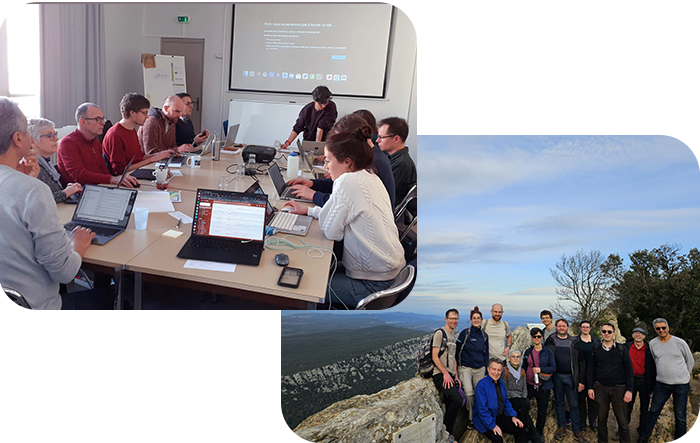
- During your postdoctoral research, you’ve participated in several collaborative projects with other postdoctoral researchers at FRB-CESAB. What have these projects involved?
One of the most positive aspects of my experience at CESAB, beyond the excellent working environment, was the interactions with other postdoctoral researchers. These enriching discussions led to the publication of an opinion paper in which we shared our reflections with the scientific community on the current publication system. We explored ways for postdocs to actively engage in driving change within this system, which is often criticized for its biases and counterproductive practices.
Following one of the recommendations made in that paper, the new group of postdocs is now working on creating a tool to measure the proportion of ethical publishers cited in scientific articles. The goal is to encourage, as much as possible, the use of research from publishers who support practices that benefit the research system and to reduce reliance on publishers whose practices harm the scientific ecosystem.
- What are your hopes and goals for the future?
To continue my current collaborations while maintaining the same level of enrichment and excellence with researchers during my next research mission in Japan.
(And, of course, to secure a permanent position afterward!)
New scientific publications
- Fu, Z., Zhan, Q., Lenoir, J., Wang, S., Qian, H., Yang, J., Sun, W., Mbuni, Y. M., Ngumbau, V. M., Hu, G., Yan, X., Wang, Q., Chen, S.-C., & Zhou, Y. (s. d.). Climate change drives plant diversity attrition at the summit of Mount Kenya. New Phytologist. https://doi.org/10.1111/nph.20344
[DISCAR]
- Gimenez, O. (2024). Spatial Occupancy Models for Data Collected on Stream Networks. Aquatic Conservation: Marine and Freshwater Ecosystems, 34(11), e70013. https://doi.org/10.1002/aqc.70013
- Kervellec, M., Couturier, T., Bauduin, S., Chenesseau, D., Defos du Rau, P., Drouet-Hoguet, N., Duchamp, C., Steinmetz, J., Vandel, J.-M., & Gimenez, O. (2024). Bringing circuit theory into spatial occupancy models to assess landscape connectivity. Methods in Ecology and Evolution. https://doi.org/10.1111/2041-210X.14418
[FORCIS]
- Chaabane, S., de Garidel-Thoron, T., Meilland, J., Sulpis, O., Chalk, T. B., Brummer, G.-J. A., Mortyn, P. G., Giraud, X., Howa, H., Casajus, N., Kuroyanagi, A., Beaugrand, G., & Schiebel, R. (2024). Migrating is not enough for modern planktonic foraminifera in a changing ocean. Nature, 636(8042), 390‑396. https://doi.org/10.1038/s41586-024-08191-5
[LANDWORM]
- Gérard, S., Decaëns, T., Butt, K. R., Briones, M. J. I., Capowiez, Y., Cluzeau, D., Hoeffner, K., Le Bayon, R.-C., Marchán, D. F., Marsden, C., Muys, B., Pelosi, C., Pérès, G., Phillips, H. R. P., Santini, L., Thuiller, W., & Hedde, M. (2025). Putting earthworm conservation on the map : Shortfalls and solutions for developing earthworm conservation. Biological Conservation, 302, 110911. https://doi.org/10.1016/j.biocon.2024.110911
[NAVIDIV]
- Jeliazkov, A., Martínez-Fernández, V., Altanov, V. Y., Beisel, J.-N., Buijse, A. D., Consuegra, S., Felin, S., Garcia de Leaniz, C., Graf, W., He, F., Jähnig, S. C., Leitner, P., Schmidt-Kloiber, A., Sexton, A. N., Staentzel, C., Tales, E., Wantzen, K. M., & Wolter, C. (2024). A global systematic map of knowledge of inland commercial navigation effects on freshwater ecosystems. Journal of Environmental Management, 370, 122474. https://doi.org/10.1016/j.jenvman.2024.122474
[PARSEC]
- Specht, A., Stall, S., Machicao, J., Catry, T., Chaumont, M., David, R., Devillers, R., Edmunds, R., Jarry, R., Mabile, L., Miyairi, N., O’Brien, M., Correa, P. P., Santos, S., Subsol, G., & Wyborn, L. (2024). Managing linguistic obstacles in multidisciplinary, multinational, and multilingual research projects. PLOS ONE, 19(12), e0311967. https://doi.org/10.1371/journal.pone.0311967
- Mouillot, D., Velez, L., Albouy, C., Casajus, N., Claudet, J., Delbar, V., Devillers, R., Letessier, T. B., Loiseau, N., Manel, S., Mannocci, L., Meeuwig, J., Mouquet, N., Nuno, A., O’Connor, L., Parravicini, V., Renaud, J., Seguin, R., Troussellier, M., & Thuiller, W. (2024). The socioeconomic and environmental niche of protected areas reveals global conservation gaps and opportunities. Nature Communications, 15(1), 9007. https://doi.org/10.1038/s41467-024-53241-1
[RIVAGE]
- Bellard, C., Marino, C., Butt, N., Fernández-Palacios, J. M., Rigal, F., Robuchon, M., Lenoir, J., Irl, S., Benítez-López, A., Capdevila, P., Zhu, G., Caetano, G., Denelle, P., Philippe-Lesaffre, M., Schipper, A. M., Foden, W., Kissling, W. D., & Leclerc, C. (2025). A framework to quantify the vulnerability of insular biota to global change. https://hal.science/hal-04550966
- Marino, C., Soares, F. C., & Bellard, C. (s. d.). Conservation priorities for functionally unique and specialized terrestrial vertebrates threatened by biological invasions. Conservation Biology, e14401. https://doi.org/10.1111/cobi.14401
- Chave, J. (2024). Species abundance, urn models, and neutrality. Comptes Rendus. Biologies, 347(G1), 119‑135. https://doi.org/10.5802/crbiol.162
[CESAB members]
- Chagnon-Lafortune, A., Duchesne, É., Legagneux, P., McKinnon, L., Reneerkens, J., Casajus, N., Abraham, K. F., Bolduc, É., Brown, G. S., Brown, S. C., Gates, H. R., Gilg, O., Giroux, M.-A., Gurney, K., Kendall, S., Kwon, E., Lanctot, R. B., Lank, D. B., Lecomte, N., … Bêty, J. (2024). A circumpolar study unveils a positive non-linear effect of temperature on arctic arthropod availability that may reduce the risk of warming-induced trophic mismatch for breeding shorebirds. Global Change Biology, 30(6), e17356. https://doi.org/10.1111/gcb.17356
- Flandrin, U., Mouillot, D., Albouy, C., Bejarano, S., Casajus, N., Cinner, J., Edgar, G., Ghilardi, M., Leprieur, F., Loiseau, N., MacNeil, A., Maire, E., McLean, M., Parravicini, V., Pellissier, L., Schiettekatte, N., Stuart-Smith, R. D., Villéger, S., & Mouquet, N. (2024). Fish communities can simultaneously contribute to nature and people across the world’s tropical reefs. One Earth, 7(10), 1772‑1785. https://doi.org/10.1016/j.oneear.2024.09.011
To receive the CESAB newsletters directly, suscribe !
Les précédentes newsletters :
– July 2019 [ENG]
